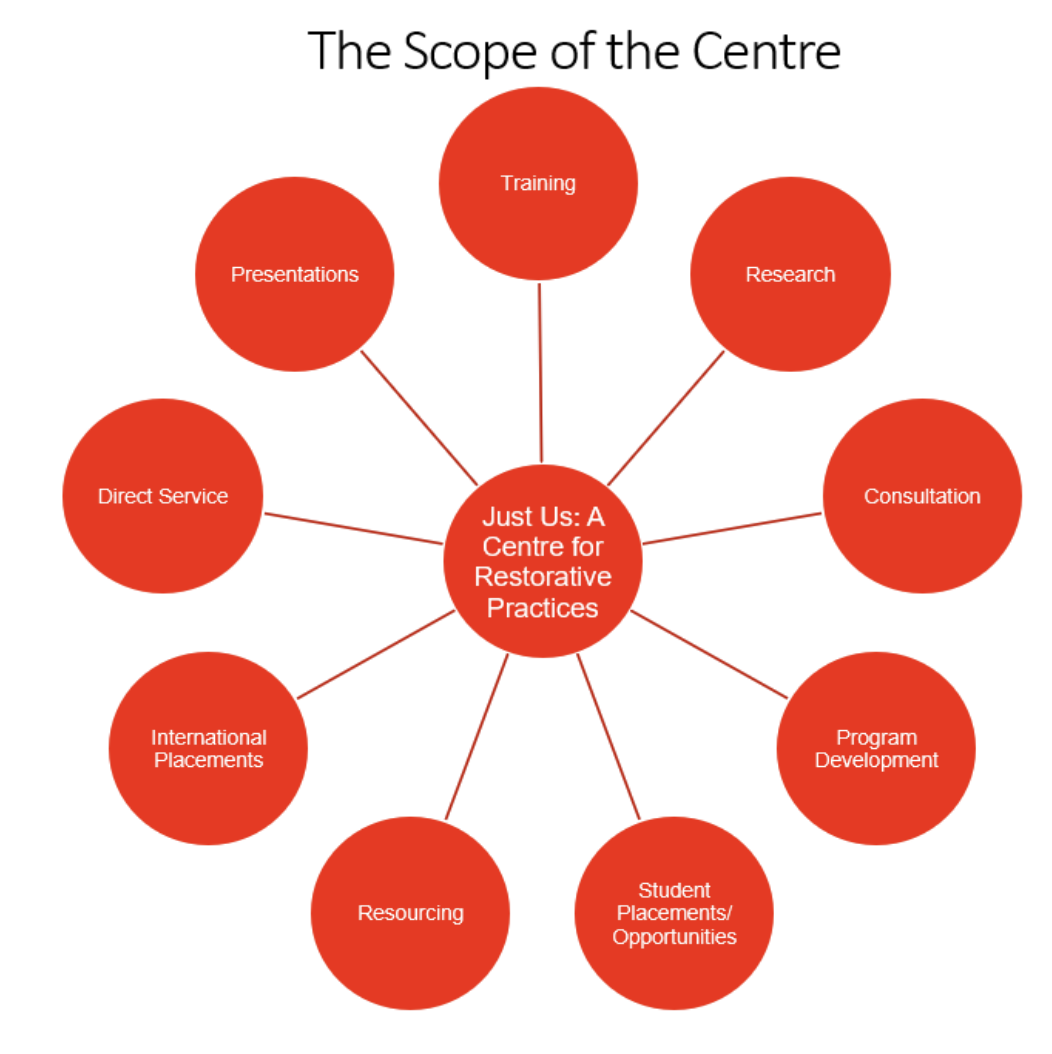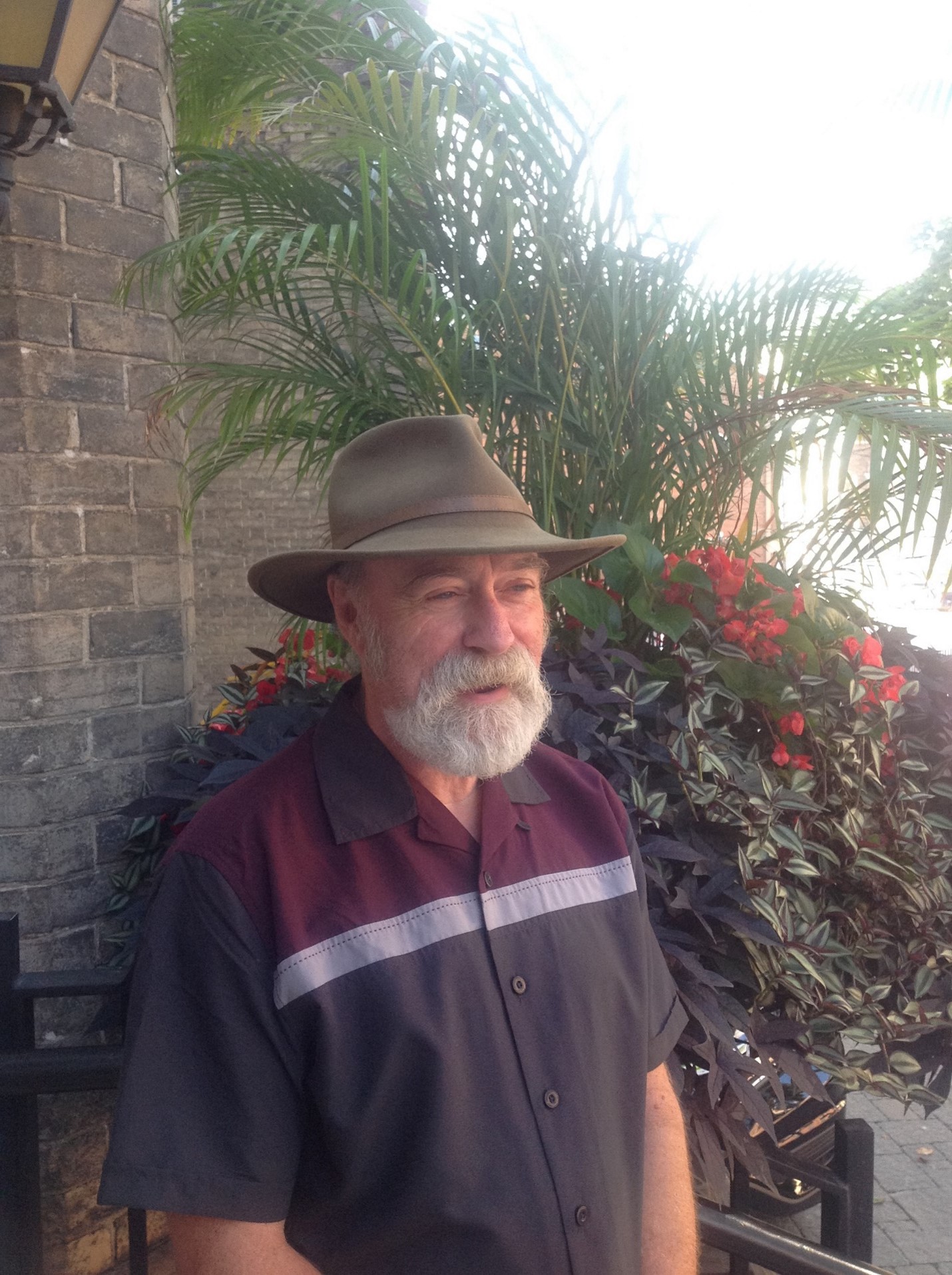Cultivating Partnerships and Pathways
Rick Kelly is a 2015 graduate of the IIRP and executive director for Just Us: A Centre for Restorative Practices based in Tottenham, Ontario, Canada. He provides training, curriculum development for colleges and non-profits, and consulting in organizational development and renewal for the youth- and adult-serving sectors. This work takes place on a local, regional, and international scale.
Q: What brought you to the IIRP?
A: I became involved with the IIRP around 2005. I had recently completed a research project exploring the effectiveness of employing the conferencing model with children under 12. I was teaching at George Brown College in Toronto in the Child and Youth Worker diploma program, and the college was interested in more faculty research. We brought in a team of local restorative practitioners for the faculty team, facilitators, a research assistant, and interested students. The impact was profound. It set the template for future development.

This led me to begin various trainings with the IIRP, which included Restorative Justice Conferencing, Conferencing for Serious Offences, and the Training of Trainers event. My goal was to provide extracurricular training for students and any of our 350+ agency partners and eventually create a center for restorative practices at the college.
While this dream was never achieved, the restorative practices framework became one of the four pillars of the Child and Youth Work curriculum, finding a home in every course, and was often used as a first response to student and staff issues. Other college programs sought me out to implement aspects of restorative practices in their classroom pedagogy.
In 2014, I was approached to become part of the Social Innovation Hub, a unique alternative approach to field placements and internships, to apply a restorative practices framework to the process. At the same time, I traveled to and developed international placements in Jamaica and supported student and faculty restorative practices work in India. In 2014-2015, I decided to undertake the master’s degree at the IIRP and chose to do it in one year.
Q: What does your professional work entail, and what makes you passionate about it?
A: My current work began in 2012 when I set up my own practice. In anticipation of retiring from the college, I planned to utilize the rich opportunity provided through my extensive network of agency partnerships and students inspired by this work. There is a natural synergy between relational youth work and the relational core of restorative practices. In fact, youth workers are at the forefront, building and maintaining trust with those who have experienced adversity and, in many cases, trauma. Over time, many of the college graduates who were champions for restorative practices reached out seeking training for their places of work.
One of my students became a partner in this work. After losing several young community members, including her 15-year-old son, to violence, she developed a passion for building a community center with a restorative element as a cornerstone of youth programs and spaces. She truly embodied a restorative ethos that was clearly aiming to break the cycle and create new narratives. The project began in 2014 and the shovels are now slated to be in the ground.
My partnership with her has led to groundbreaking work, such as the NextGen Builders initiative, which addresses restorative, economic, and racial justice. Since 2018, this program has aimed to create pathways for Black youth into the trades while being mentored by senior journeymen and journeywomen. As of today, more than 300 mentees and more than 30 mentors are enrolled.
This is my passion: seeing the investment of relationships in college students and others who mature into confident and competent practitioners, embracing and modeling the principles of restorative practices.
Q: What would you like to see in the restorative practices field in the future?
A: I hope to see restorative practices flourish in all places where we are involved in relationships with others, including formal and informal settings. At times I have thought that I am not in relationship when I am alone on my walks in the woods. However, simply looking around I have realized that I am always in relationship since I am surrounded by the natural world. We need to be constantly cognizant of this fact and accept our responsibilities to this natural world which, as we see, is often neglected.

In addition, I hope to see us nurture and promote the continued link between trauma-informed care and responsiveness. This is the model that I use in most of my work, adapted from ROCA and inspired by the voices of many, including my own. I am much more concerned and focused on prevention and promotion. The more we can eliminate the sources of trauma and adversity at the individual and systemic levels, the less there is to repair. That is how we address and repair the future.

